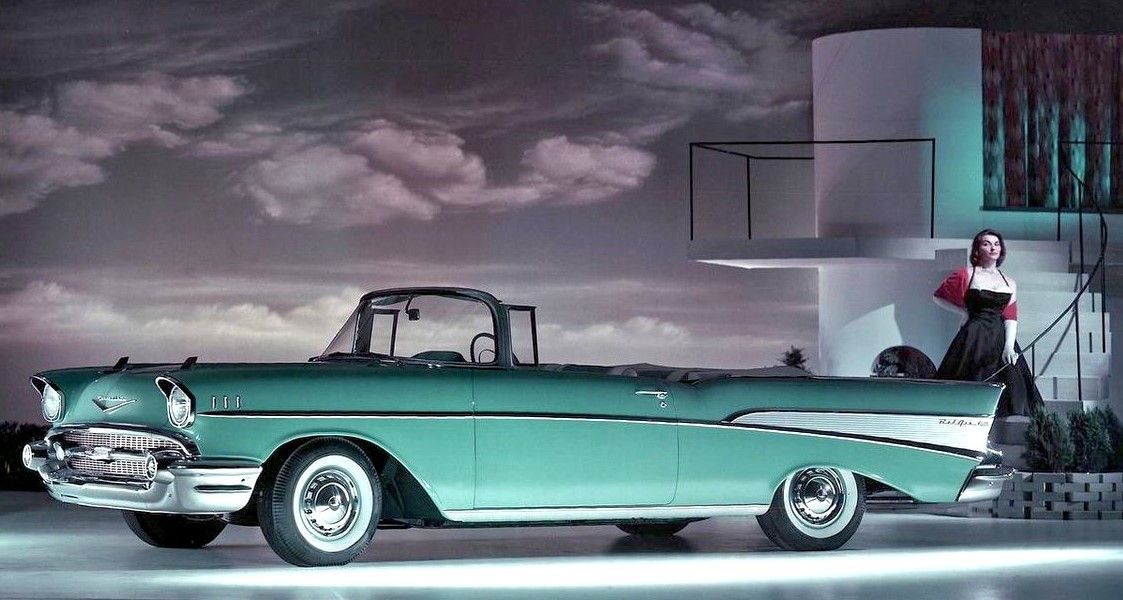
The automobile industry has always been a fascinating blend of engineering prowess, groundbreaking design, and sometimes, pure, unadulterated audacity. While the vast majority of car manufacturers aim for mass appeal with conventional, safe designs, a daring few have boldly ventured into uncharted territories, creating vehicles that fundamentally challenge our perception of what a car should look like. These automotive outliers push boundaries, sometimes resulting in vehicles that become cult classics cherished for their uniqueness, and other times producing memorable failures that leave us collectively scratching our heads, wondering what exactly the designers were thinking.
These are not just fleeting concept cars that wowed at auto shows only to be forgotten within a season. Oh no, we’re talking about real production vehicles that actually rolled on public roads, turning heads, sparking conversations, and, in many cases, defining an era. From bubble cars that barely fit two people to luxury sedans that looked like they flew in from another galaxy, the history of automobile design is peppered with wonderful oddities that somehow made it from the drawing board, through the assembly plant, and into the hands of intrepid drivers.
This in-depth exploration dives into some of the most unusual production cars ever built—vehicles that broke conventional design norms and left an indelible mark on automotive history, whether for their innovative approach or their sheer, unadulterated peculiarity. Prepare to have your notions of ‘normal’ car design challenged as we celebrate the eccentricities that dared to leave the assembly lines.

1. **BMW Isetta (1955-1962)**
The BMW Isetta stands as one of the most recognizable oddities in automotive history, earning its affectionate nickname “bubble car” for its distinctive egg-shaped design and prominent, bubble-like windows. Its origins trace back to Italy with Iso SpA, but it was BMW that acquired the manufacturing rights, brilliantly transforming this microcar into a vital post-war mobility solution during a period of fuel scarcity and dire need for affordable transportation. This quirky little car wasn’t just a design statement; it was a lifesaver for a struggling company and a nation.
What truly cemented the Isetta’s bizarre reputation was its utterly unconventional door configuration. Forget traditional side doors; the entire front of the car—including the steering wheel and dashboard—swung outward to allow entry. Passengers stepped directly into the vehicle through the front, a peculiar design choice that led to comical situations where a driver parked too close to a wall or another vehicle could find themselves comically trapped inside their own car. It was an engineering solution that was as ingenious as it was awkward.
Powering this diminutive marvel was a motorcycle-derived, single-cylinder engine, producing a mere 12 horsepower and mounted at the rear of the vehicle. With a top speed of about 53 mph (85 km/h), the Isetta wasn’t built for high-speed highway cruising. Instead, it was perfectly suited for navigating congested urban environments, offering practical and efficient transportation in a package unlike anything else on the road. Its spartan but functional interior offered seating for two adults, albeit in extremely close quarters, reinforcing its microcar ethos.
Despite its undeniable peculiarities—or perhaps precisely because of them—the Isetta proved to be a tremendous commercial success, with over 160,000 units sold during its production run. This unexpected triumph helped save BMW from financial ruin in the 1950s, providing much-needed revenue when the company was struggling. The Isetta’s distinctively weird design has cemented its place in pop culture, appearing in numerous films and television shows, and becoming a sought-after collector’s item that remains a testament to how unconventional thinking can lead to successful automotive design.
Car Model Information: 1957 BMW Isetta 300 with Rollback Sunroof
Name: Isetta
Production: Iso Isetta (1953–56),BMW Isetta (1955–62),VELAM Isetta (1955–58),Romi-Isetta (1956–61)
Manufacturer: Iso Autoveicoli,BMW,VELAM,Romi
Layout: MR layout
BodyStyle: Cabriolet,Van,Pick-up
Categories: All articles with dead external links, Articles with dead external links from February 2018, Articles with permanently dead external links, Articles with short description, BMW vehicle series
Summary: The Isetta is an Italian-designed microcar initially manufactured in 1953 by the Italian firm Iso SpA, and subsequently built under license in a number of different countries, including Argentina, Spain, Belgium, France, Brazil, Germany, and the United Kingdom. The name Isetta is the Italian diminutive form of Iso, meaning “little Iso”. Because of its egg shape and bubble-like windows, it became known as a bubble car, a name also given to other similar vehicles.
In 1955, the BMW Isetta became the world’s first mass-production car to achieve a fuel consumption of 3 L/100 km (94 mpg‑imp; 78 mpg‑US). It was the top-selling single-cylinder car in the world, with 161,728 units sold.
Get more information about: Isetta
Buying a high-performing used car >>>
Brand: BMW Model: Isetta
Price: $36,997 Mileage: 4,901 mi.
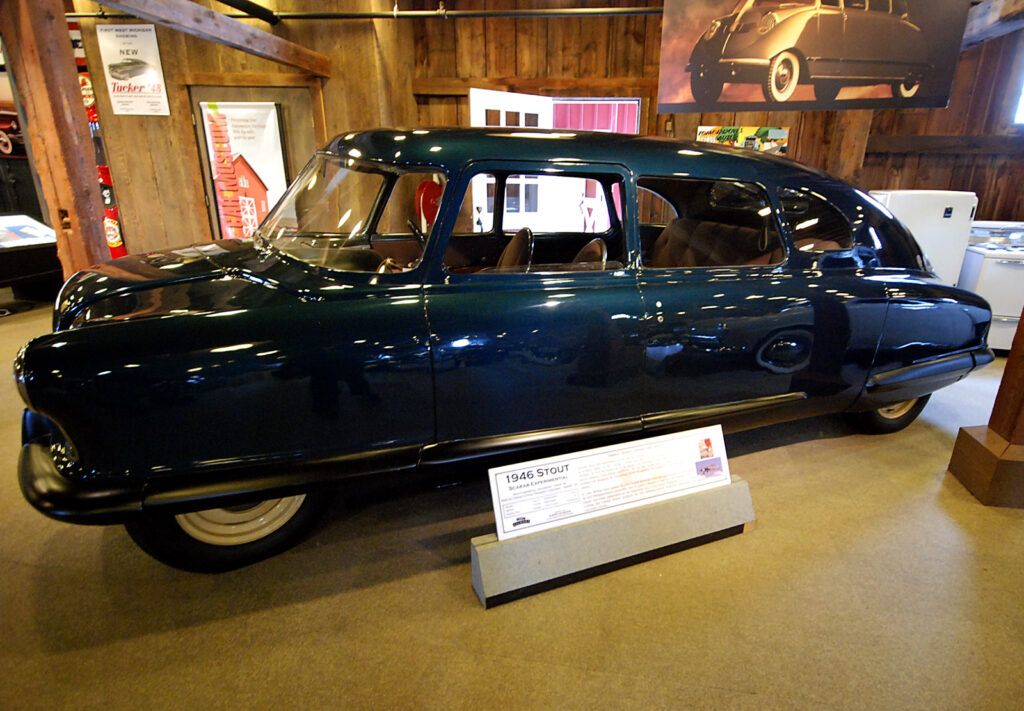
2. **Stout Scarab (1936-1941)**
Often heralded as the world’s first minivan, the Stout Scarab was an automotive visionary, arriving decades ahead of its time with a design so bizarre it makes most modern concept cars look conventional. Created by the brilliant aviation engineer William Bushnell Stout, the Scarab drew its inspiration directly from its namesake, the Egyptian scarab beetle. The result was a bulbous, aerodynamic shape that appeared utterly alien in the 1930s automotive world, which was then dominated by long-hooded, separate-fendered designs.
The Scarab’s weirdness extended far beyond its groundbreaking exterior. Its rear-mounted Ford V8 engine ingeniously freed up the entire interior for a revolutionary cabin layout. Inside, passengers found a veritable living room on wheels, complete with movable furniture. Seats could be rearranged around a small table—a feature that wouldn’t become common in production vehicles until the 1980s. While the driver’s seat remained fixed, everything else could be reconfigured, allowing for face-to-face conversations or even a small, mobile workspace.
Construction of the Scarab was equally unconventional, utilizing a spaceframe chassis wrapped in lightweight aluminum panels, techniques boldly borrowed from aircraft design. The doors, only one per side, were positioned asymmetrically, with the right-side door placed toward the rear for easier passenger access—another nod to its innovative approach. The interior itself was lavish for the era, featuring wool carpeting, sumptuous leather upholstery, and indirect lighting, offering a level of luxury and sophistication rarely seen.
Production challenges, coupled with an astronomical price tag of approximately $5,000 (when a typical car cost around $650), severely limited its run to just nine units. This scarcity makes the Scarab one of the rarest production vehicles ever made, each essentially hand-built with slight variations. The Scarab’s influence, however, echoed throughout automotive history, predicting trends in monocoque construction, unparalleled space efficiency, and interior flexibility that wouldn’t become mainstream for decades. Today, surviving examples are prized museum pieces, representing not just an automotive oddity but prescient design thinking that was simply too revolutionary—and too weird—for its time.
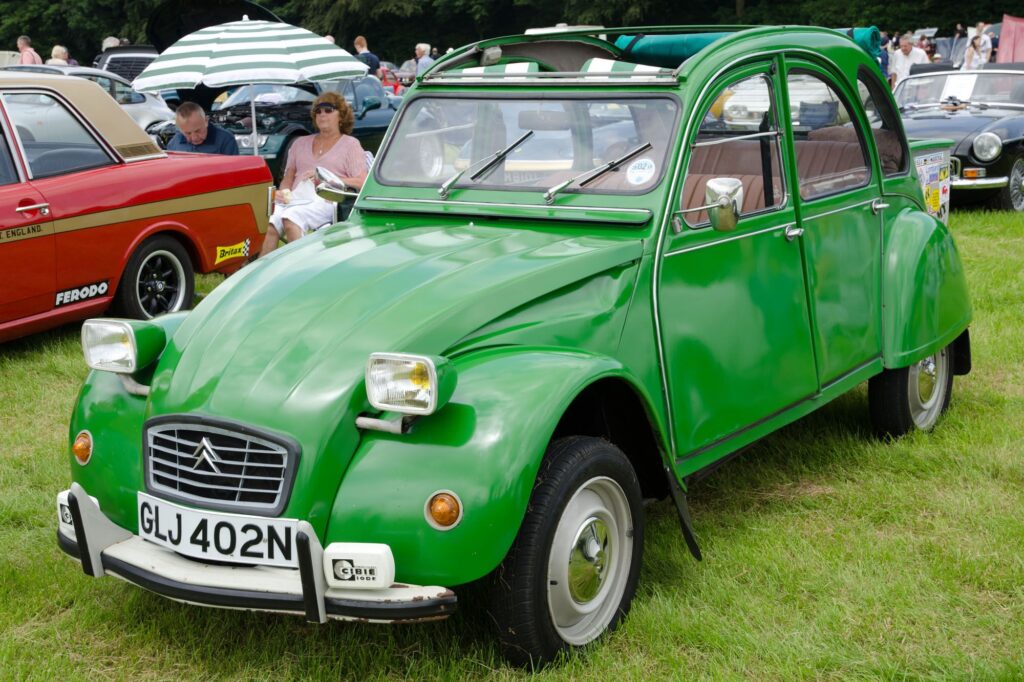
3. **Citroen 2CV (1948-1990)**
From its debut at the 1948 Paris Motor Show to its final production day in 1990, the Citroen 2CV (deux chevaux-vapeur, or “two steam horses”) stood as a monument to automotive weirdness that somehow managed to capture the hearts of millions. Originally conceived in the 1930s with a design brief demanding an “umbrella on wheels” capable of carrying farmers and their eggs across plowed fields without breaking a single one, the very premise suggested the result would be nothing short of bizarre.
The car’s appearance was unmistakably odd, featuring a corrugated sheet metal body that strikingly resembled an upside-down bathtub. This peculiar shell was mounted on a suspension system so soft that the car would dramatically lean into corners without tipping over—a truly unique spectacle. Further enhancing its endearingly awkward aesthetic was its canvas roll-back roof, which could be fully opened, effectively transforming the 2CV into a semi-convertible. The headlights, initially mounted on the front fenders, completed its bug-eyed charm.
Underneath this strange exterior lay equally unconventional engineering that defied norms. The suspension system, for instance, used horizontal springs connected to leading and trailing arms, creating a ride so remarkably compliant that the 2CV could traverse rutted farm tracks with exceptional comfort. Its air-cooled, two-cylinder engine produced a modest 9 horsepower initially, later upgraded to a “mighty” 29 hp in later models. Even the shifting mechanism was peculiar, with a push-pull-twist gear lever protruding from the dashboard rather than the floor.
The interior embraced an almost militant minimalism, featuring hammock-style seats that could be removed entirely for picnics or emergency repairs. Heating was ingeniously provided by direct air from the engine cooling system, and in an ultimate touch of thrift, the windshield wipers were originally powered by the speedometer cable, meaning they frustratingly slowed down when the car did. Despite, or perhaps because of, these numerous quirks, the 2CV became one of the most successful cars in history, with over 3.8 million units produced. It represented functional weirdness at its finest, a car so deliberately odd in its quest for simplicity and utility that it transcended its strangeness to become an icon of French ingenuity and charm.

4. **Reliant Robin (1973-2002)**
The Reliant Robin holds a special, albeit often ridiculed, place in automotive history as perhaps the most lampooned production car ever made, yet one that stubbornly maintained a production run spanning nearly three decades. This British three-wheeler’s most obvious peculiarity, and indeed its defining characteristic, was its fundamental configuration: two wheels at the back and just one at the front. This design choice created a vehicle that looked perpetually on the verge of tipping over—a visual prophecy that, regrettably, it often fulfilled.
The Robin’s notorious tendency to roll over during sharp turns became a widespread cultural punchline. It was famously lampooned in the British television show “Mr. Bean,” and unforgettable segments on “Top Gear” featured presenter Jeremy Clarkson repeatedly flipping a Robin, much to the audience’s uproarious delight. The physics were undeniable: with just a single wheel handling steering duties and minimal weight over the front axle, cornering at anything above modest speeds was a truly precarious proposition, turning routine drives into white-knuckle experiences.
What made the Robin truly bizarre was not just its tripod wheel arrangement, but Reliant’s unwavering commitment to the concept. Rather than treating it as a novelty, they positioned the Robin as a legitimate, everyday car, complete with family-friendly features like a relatively spacious interior for its tiny footprint, a rear hatch for cargo, and seating for four (albeit very cozy seating). Power came from a small 750cc engine, later upgraded to 850cc, driving the rear wheels, proving that utility was paramount, even if stability wasn’t always.
Perhaps the weirdest aspect of the Robin was its legal classification in the UK. Due to its three-wheel configuration, it was technically registered as a motorcycle, meaning it could be driven with a motorcycle license and taxed at lower rates. This made it an attractive option for budget-conscious drivers or those who had lost their standard driving privileges. Despite its inherent design flaws and public mockery, the Robin developed a surprisingly devoted following. More than 63,000 were sold across multiple generations, proving that sometimes, automotive weirdness—even potentially dangerous weirdness—can find its market, embodying affordable mobility wrapped in fiberglass eccentricity for many rural British families.
Read more about: When Quirky Became Cool: 12 Oddball Cars That Found Cult Followings
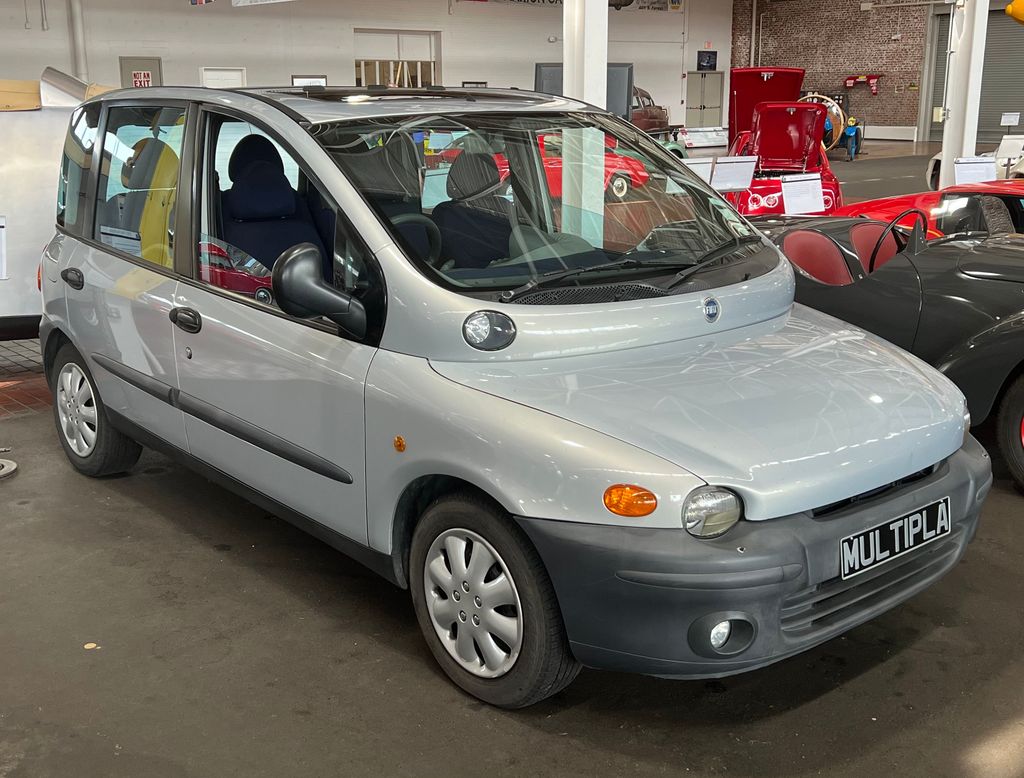
5. **Fiat Multipla (1998-2010)**
When the Fiat Multipla debuted at the 1998 Paris Motor Show, onlookers must have genuinely questioned if they were witnessing automotive design innovation or an elaborate practical joke. The first-generation Multipla (1998-2003) featured what can only be described as a deliberate assault on conventional automotive aesthetics, creating one of the most polarizing production vehicles ever to grace the roads. It was a statement, whether you liked it or not.
The Multipla’s most startling feature was its bizarre two-tier front end. The main headlights were positioned normally at the corners, but directly above them sat another set of lights along with the turn signals. This created the disorienting impression of a vehicle with two separate faces stacked on top of each other—a truly “bug-eyed” appearance. This was complemented by a windshield that seemed to start almost from the front bumper, wrapping up and over the cabin in a distinctly bubble-like fashion, further blurring traditional automotive lines.
From the side, the Multipla resembled a traditional minivan that had somehow been compressed and then expanded outward, creating bulging sides that seemed to defy aerodynamic logic. Its greenhouse (the window area) appeared disproportionately large for the body, giving it the silhouette of a vehicular greenhouse more than a conventional car. It was a shape that simply refused to blend in, ensuring it would be unforgettable for all the right—and wrong—reasons.
However, beneath this aggressively weird exterior lay a brilliantly conceived interior. The Multipla featured a novel 3+3 seating arrangement with two rows of three individual seats, allowing six adults to travel in genuine comfort within the compact footprint of a standard compact car. The dashboard was equally innovative, with a central instrument cluster and gear shift mounted directly on the dash rather than between the seats, cleverly freeing up valuable floor space. Despite winning numerous design and innovation awards, including “Car of the Year” from Top Gear magazine, its polarizing looks meant sales never matched its practical brilliance.
Read more about: 13 Automotive Aberrations So Unforgettable, They Should’ve Been Forgotten

6. **Pontiac Aztek (2001-2005)**
The Pontiac Aztek has achieved a legendary, almost infamous, status as one of the most bizarrely styled production vehicles ever to emerge from a major manufacturer, despite its relatively brief production run. When General Motors revealed this ambitious “sport recreational vehicle” in 2000, automotive journalists and the public alike responded with a collective gasp—and emphatically, not in admiration. The Aztek seemed to embody the pitfalls of “design by committee” gone horribly wrong.
Its chaotic collection of angles, disparate planes, and excessive plastic body cladding created a vehicle that looked less like a cohesive design and more like it had been haphazardly assembled using discarded parts from several different cars. What made the Aztek particularly strange was not just the individual design elements, but how they stubbornly failed to coalesce into any unified or harmonious whole. The front end, with its split-grille design and oddly positioned headlights, alongside a hood that appeared to be forced onto a body it wasn’t designed for, was a visual assault.
The rear was equally confounding, featuring a steeply raked rear window bisected by a prominent spoiler, and a lower section that seemed crudely tacked on as an afterthought. The extensive gray plastic cladding along the entire lower body gave the impression of a vehicle wearing ill-fitting, cheap armor. Yet, amidst this visual chaos, the Aztek did offer some innovative, albeit gimmicky, features. These included a removable rear cargo tray that could double as a picnic table, an optional tent attachment that converted the rear into a camping shelter, and even a built-in air compressor for inflatable mattresses, all aiming for the “active lifestyle” consumer.
Inside, the center console could be removed and used as a portable cooler, further exemplifying GM’s attempt to appeal to a specific demographic with quirky features rather than cohesive design. The interior dashboard and control layout were as visually cluttered as the exterior, with an abundance of different textures, shapes, and materials competing for attention. Despite its commercial failure and design infamy, the Aztek has experienced a curious cultural rehabilitation, partly thanks to its prominent role as Walter White’s vehicle in the television series “Breaking Bad.” Today, it stands as a fascinating case study in automotive design hubris and the perils of trying too hard to be different without a unifying vision.
Read more about: The Road to Ruin: 12 High-Performance Cars That Drove Straight into Disaster and Became Automotive Nightmares
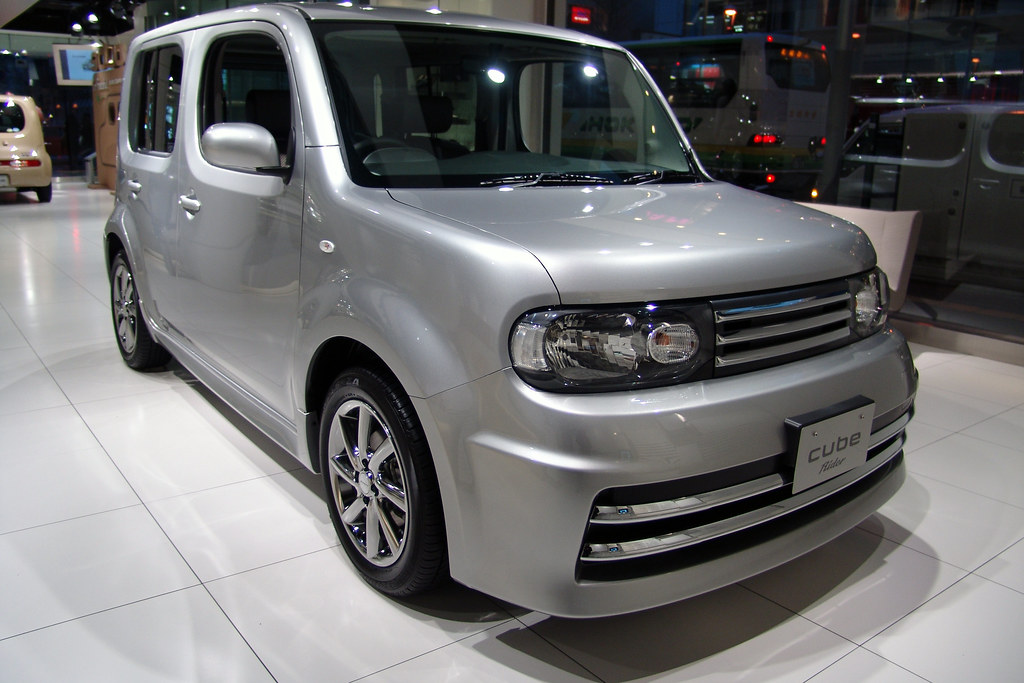
7. **Nissan Cube (2008-2014)**
The Nissan Cube, particularly in its third generation that reached global markets, embodied automotive weirdness through a deliberate and uncompromising asymmetry—a design choice that boldly flies in the face of conventional car styling. While many unusual cars happened to be weird through compromise or poor execution, the Cube was weird by meticulous design, with Nissan’s designers proudly citing Japanese “boxy-yet-curved” aesthetic philosophies as their core inspiration. This was oddity as an intentional art form.
The Cube’s most striking and instantly recognizable feature was its asymmetrical rear window. This window dramatically wrapped around the right side of the vehicle but abruptly ended on the left, creating a visual imbalance that instantly made the car identifiable from a distance. This design quirk wasn’t merely for show; it was originally intended to reduce the blind spot on the driver’s side in right-hand drive markets like Japan. However, in a peculiar twist, Nissan didn’t mirror this feature when exporting left-hand drive versions to North America and Europe, resulting in a car with styling that actively contradicted its functional intent in those markets.
The car’s boxiness was taken to extremes with its nearly vertical sides and rear, yet the front featured a more rounded, almost bulldog-like face, creating an intriguing contrast. The windows were designed to evoke a “fishbowl” feeling, with extended pillars creating the impression of picture frames around the glass, maximizing light and visibility. Inside, the ceiling featured a whimsical “water drop” ripple design emanating from the center light, while the floor adopted a “Jacuzzi curve” layout—design terminology that Nissan enthusiastically used in its marketing materials to highlight the interior’s unique character.
Door panels, dashboard elements, and speaker grilles all featured rounded square motifs that cleverly echoed the car’s distinctive exterior shape. The front bench-like seat and a removable “lounge cushion” center armrest furthered the impression of a mobile living room rather than a traditional automobile interior. Despite its undeniably polarizing appearance, the Cube developed a devoted following, particularly among urban dwellers who appreciated its excellent visibility, surprisingly spacious interior within a compact footprint, and the bold statement its unconventional design made. Sales outside Japan never reached expectations, however, leading to its discontinuation in North American and European markets after just a few years. The Nissan Cube truly represents intentional weirdness as a design philosophy—a vehicle that didn’t accidentally end up strange but rather embraced oddity as its defining characteristic and marketing advantage.
Car Model Information: 2011 Nissan Cube 1.8S
Name: Nissan Cube
Manufacturer: Nissan
Production: 1998–2019
Assembly: Yokosuka, Kanagawa
Class: Mini MPV
BodyStyle: hatchback
Layout: Front-engine, front-wheel-drive,Front-engine, four-wheel-drive
Platform: Nissan B platform
Successor: Nissan Note#E12,Nissan Lafesta,Nissan Juke
ModelYears: 2009–2014 (North America)
Categories: 2000s cars, 2010s cars, All-wheel-drive vehicles, All Wikipedia articles needing clarification, All articles with specifically marked weasel-worded phrases
Summary: The Nissan Cube is a mini MPV produced by carmaker Nissan between 1998 and 2019. Initially sold only in Japan, the Cube was sold in North American markets from 2009 to 2014, and in European markets from 2009 to 2011. In Japan, it was exclusive to Nissan Red Stage dealerships. It is a slightly larger load-carrying alternative to the Nissan Micra hatchback. While production for the North American market ended in 2014, the Japanese-market Cube lasted until December 2019.
Get more information about: Nissan Cube
Buying a high-performing used car >>>
Brand: Nissan Model: Cube
Price: $2,988 Mileage: 147,800 mi.
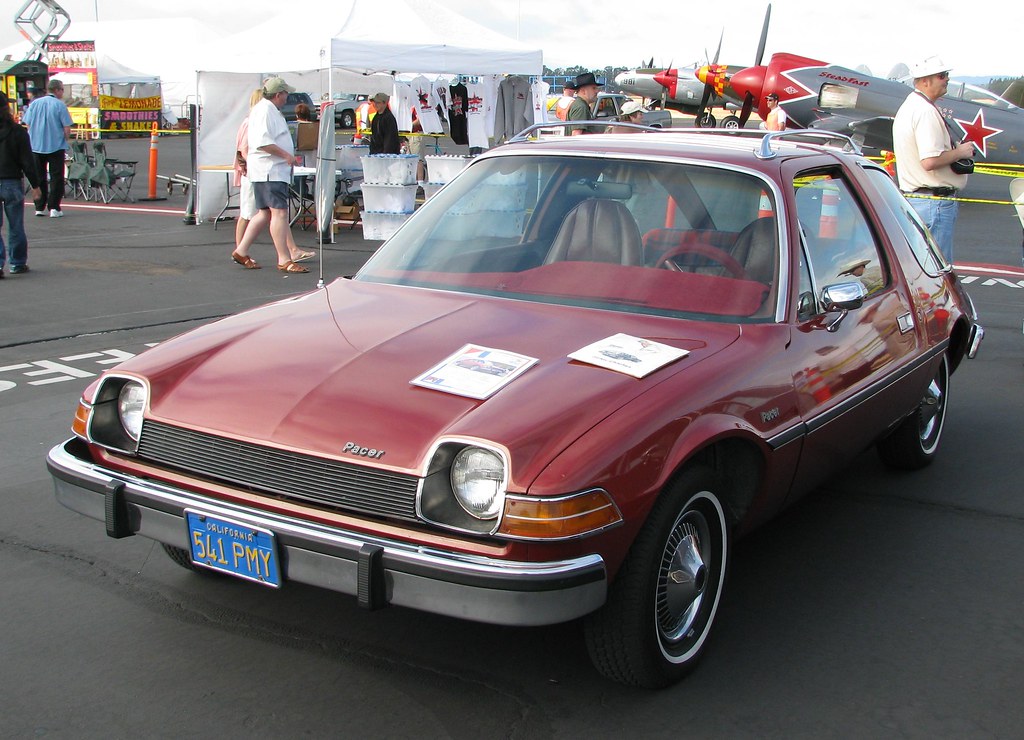
8. **AMC Pacer (1975-1980)**
The AMC Pacer burst onto the American automotive scene in 1975 like nothing before it, immediately earning the memorable nickname “the flying fishbowl” for its extraordinary greenhouse to body ratio. At a time when most American cars were long, low, and angular, the Pacer offered a stubby, rounded profile with windows that seemed to comprise nearly 40% of its entire surface area. It was a design so utterly weird that it appeared futuristic and ancient simultaneously, defying every established norm.
What made the Pacer particularly bizarre was its subtle yet significant asymmetrical design. The passenger door was a full four inches longer than the driver’s door, supposedly to facilitate easier entry to the rear seats from the curbside. This peculiar feature meant the car wasn’t even symmetrical when viewed from above, adding another layer to its oddity. Further contributing to its unconventional proportions was the Pacer’s width; it was as wide as full-sized American cars of the era, despite being much shorter in length, giving it the stance of a vehicular bulldog.
The Pacer’s development story adds yet another layer of weirdness to its legacy. It was originally designed around a cutting-edge Wankel rotary engine being developed by General Motors. However, when GM unexpectedly abandoned that project, AMC was forced to hastily reconfigure the engine bay to accept their existing straight-six engine. This last-minute change necessitated pushing the engine far forward and cramming the radiator to one side, resulting in unusual weight distribution and a notoriously cramped engine compartment that made routine maintenance an extraordinary challenge.
Inside, the Pacer continued its commitment to strangeness with a dashboard that elegantly curved away from the driver toward the passenger side, creating what AMC boldly called an “asymmetrical cockpit.” The enormous windshield and expansive windows, while offering unparalleled visibility, also created a potent greenhouse effect that would have been unbearable without air conditioning, making that expensive option essentially mandatory. Despite its numerous peculiarities—or perhaps precisely because of them—the Pacer initially sold well, with nearly 100,000 units moved in its first year, before sales quickly declined as the novelty wore off and its practical limitations became apparent. Its legacy was cemented in pop culture through its starring role in the film “Wayne’s World,” which wholeheartedly embraced the car’s weird but lovable status and introduced it to a new generation who appreciated its audacious oddity.
Read more about: Beyond the Hype: 15 Classic Cars That Will Break Your Heart (and Wallet) – A Jalopnik Guide for Enthusiasts
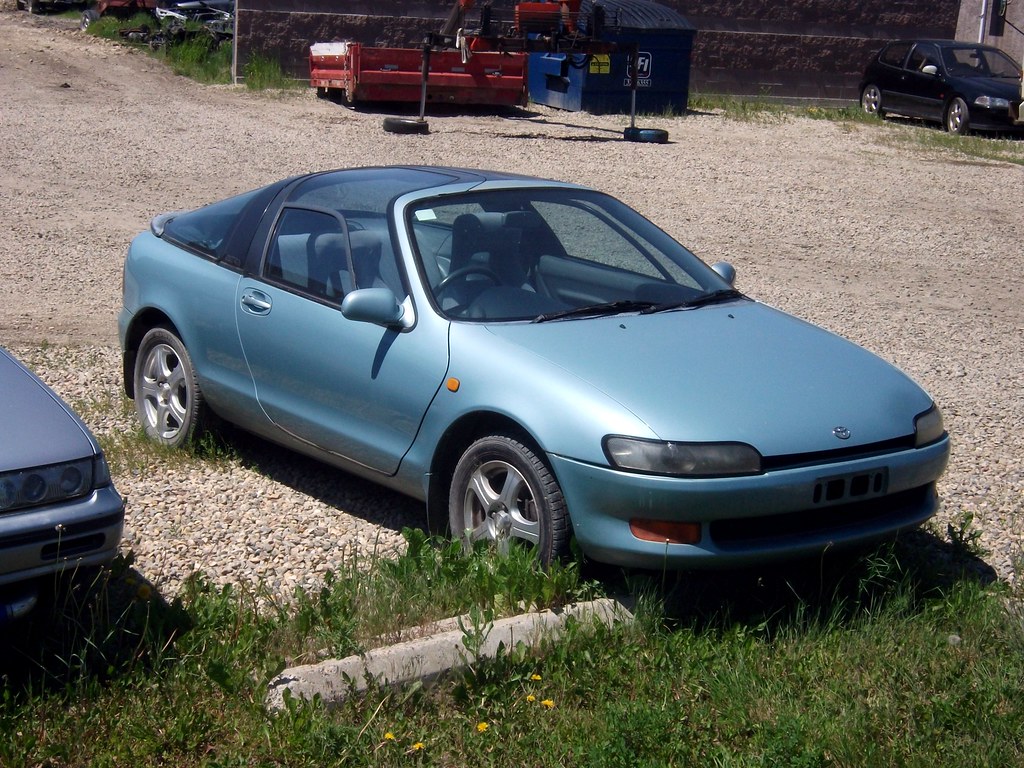
9. **Toyota Sera (1990-1996)**
The Toyota Sera, originating from a manufacturer globally recognized for reliability and conservatism, was, by all accounts, anything but conventional. Sold exclusively within the Japanese domestic market, this car might have faded into an obscure footnote of automotive history if not for its single, most distinctive feature: its dramatic butterfly doors. These striking panels swung upward and slightly forward, creating an entry and exit experience of pure, unadulterated theater—a spectacle virtually unheard of in an affordable production vehicle.
What truly cemented the Sera’s peculiar status was the stark contrast between its revolutionary doors and its thoroughly modest mechanical underpinnings. Built upon the humble Toyota Starlet platform, it housed a rather unpretentious 1.5-liter four-cylinder engine, producing a mere 110 horsepower. In essence, this setup delivered the automotive equivalent of a peacock’s extraordinary visual display wrapped around a remarkably ordinary performance package.
Yet, those butterfly doors weren’t merely for show; they offered a surprising practical benefit, allowing for remarkably easy ingress and egress, even in tight parking spaces, requiring minimal clearance. The Sera’s greenhouse design was equally unique, composed almost entirely of glass with canopy-like transparency that gracefully enveloped the roof and flowed down the sides. With over 90% of its upper body made of glass, the interior was consistently bathed in natural light, providing nearly 360-degree visibility—a genuine fishbowl sensation.
Inside, the quirks persisted and delighted: optional electroluminescent displays that could magically change color, and a “Super Live Surround Sound” audio system boasting a full ten speakers within a car barely 12 feet long. Some models even featured small wind deflectors that would automatically rise from the hood when the doors were opened, adding another theatrical flourish to its already distinctive and unforgettable character.
Approximately 16,000 Seras were produced between 1990 and 1996, with subtle variations creating what collectors now lovingly recognize as “phases” in its production. Though never officially exported, many have since found their way to dedicated enthusiast owners worldwide. Its visionary butterfly door design even reportedly inspired none other than Gordon Murray during the conception of the legendary McLaren F1 supercar, proving how genuine automotive weirdness can transcend markets and leave an indelible mark on design history.

10. **Aston Martin Lagonda (1976-1990)**
The Aston Martin Lagonda Series 2 stands as one of the most audaciously weird luxury cars ever conceived and produced by a prestigious manufacturer. Unveiled in 1976, this ultra-exclusive sedan looked like absolutely nothing else on the road—a sleek, wedge-shaped spaceship that appeared to have materialized straight from the fever dream of a science fiction illustrator. It was a bold, profoundly unconventional statement, utterly defying established British luxury automotive aesthetics of the time.
Its bizarre and captivating appearance revolved entirely around an extraordinarily long, flat hood that stretched forward like an aircraft carrier deck, punctuated only by a set of pop-up headlights that would dramatically rise from its otherwise uninterrupted, razor-sharp surface. The car’s profile was a symphony of acute angles and striking horizontal emphasis, culminating in an almost non-existent grille. At nearly 18 feet long yet just 4.5 feet tall, its extreme proportions made it look impossibly low and elongated, more akin to a futuristic architectural model on wheels than a traditional car.
The interior pushed the boundaries of weirdness even further, boasting a pioneering—yet notoriously unreliable—digital dashboard. Utilizing LED and later vacuum fluorescent display technology, it visually resembled a spacecraft’s control deck but frequently succumbed to malfunctions, often leaving drivers without any functioning instrumentation whatsoever. It was a bold foray into cutting-edge technology, perhaps a bit too ambitious and fragile for its time, but undeniably fascinating.
Each Lagonda required an astonishing approximately 2,200 hours to meticulously hand-build, with its incredibly complicated electronics demanding specialized attention from skilled craftsmen. Power came from Aston Martin’s venerable 5.3-liter V8 engine, producing a respectable 280 horsepower, though its actual performance seldom matched the car’s dramatic, space-age visual flair. Performance was certainly adequate, but it was definitively not the headline act for this peculiar luxury cruiser.
With only 645 units produced across all generations and an astronomical price tag that made it one of the most expensive production cars of its era, the Lagonda epitomized weird exclusivity. Its design remains so controversial that it frequently appears on both “worst car designs” and “most revolutionary car designs” lists—sometimes simultaneously. It proved that even the most esteemed and traditional manufacturers could abandon convention in pursuit of making a powerful, strange statement, resulting in a luxury sedan so bizarrely futuristic it still turns heads and sparks debate nearly half a century later.
Car Model Information: 2024 Mitsubishi Outlander SE 2.5 2WD
Caption: Aston Martin Lagonda Series 2
Name: Aston Martin Lagonda
Manufacturer: Aston Martin
Designer: William Towns
Production: 1974–1990,645 produced
Assembly: Newport Pagnell,Buckinghamshire,England
Predecessor: Lagonda Rapide
Successor: Lagonda Taraf
Class: Full-size,luxury car
BodyStyle: sedan (car)
Layout: Front-engine, rear-wheel-drive layout
Engine: cvt,V8 engine
Transmission: Torqueflite,automatic transmission
Wheelbase: 2916 mm
Abbr: on
Length: 5282 mm
Width: 1816 mm
Height: 1302 mm
Categories: 1980s cars, 1990s cars, All Wikipedia articles written in British English, All articles with unsourced statements, Articles with short description
Summary: The Aston Martin Lagonda is a full-size luxury four-door saloon manufactured by British manufacturer Aston Martin between 1974 and 1990. A total of 645 were produced. The name was derived from the Lagonda marque that Aston Martin had purchased in 1947. There are two distinct generations: the original, short-lived 1974 design based on a lengthened Aston Martin V8, and the entirely redesigned, wedge-shaped Series 2 model introduced in 1976.
In 2014, Aston Martin confirmed it would launch a new Lagonda model called the Taraf for the Middle-East market, sold on an invitation-only basis as a successor to this saloon. As of 2022, 113 remain registered in the United Kingdom, though 82 are SORN (unregistered for routine road use).
Get more information about: Aston Martin Lagonda
Buying a high-performing used car >>>
Brand: Aston Martin Model: Lagonda
Price: $21,500 Mileage: 62,096 mi.
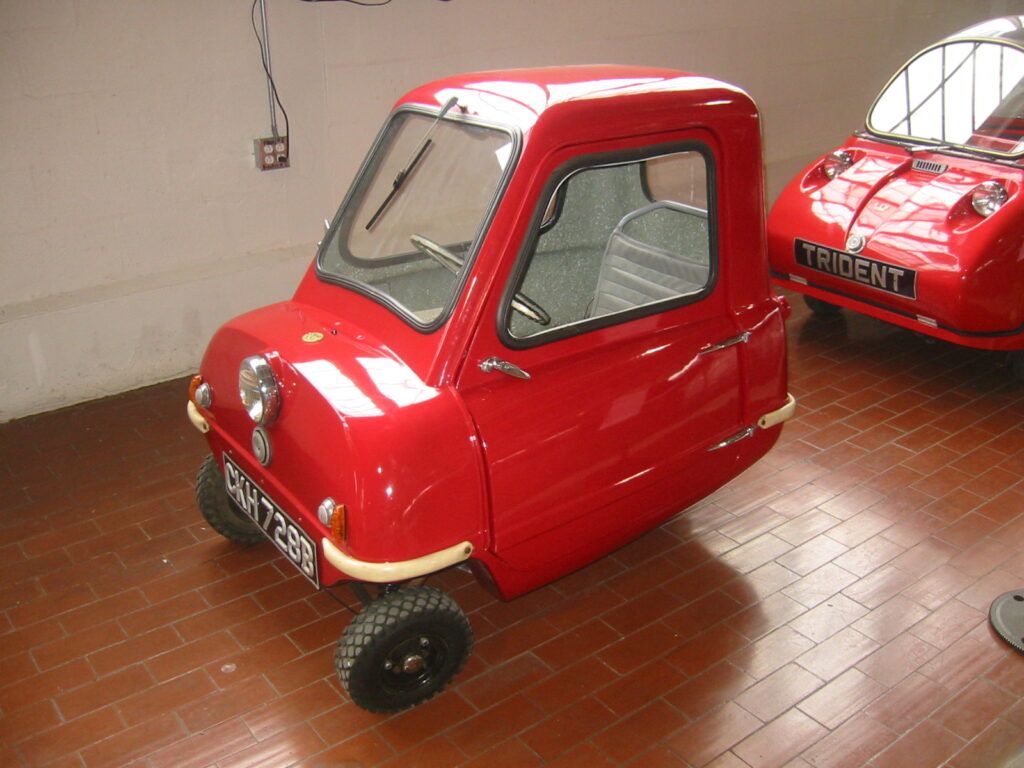
11. **Peel P50**
Prepare for a genuine jaw-dropper: the Peel P50, officially recognized by the Guinness World Records as the planet’s smallest production car. This isn’t just a claim; it’s a verifiable fact, with this micro-marvel measuring a truly astonishing 54 inches long and a mere 39 inches wide. Just imagine the sheer audacity of trying to engineer a functional automobile within such impossibly tiny dimensions!
This extreme engineering feat was conceived purely for single-person transport, a design brief that unapologetically prioritized ultimate compactness and urban maneuverability. Underneath its incredibly diminutive frame, barely perceptible, lurked a modest 49cc engine, perfectly scaled for its singular purpose. Forget tearing up the asphalt at breakneck speeds; that was unequivocally not its mission.
Indeed, even with that humble, motorcycle-derived engine, the P50 managed a sprightly (for its size!) top speed of a respectable 38 mph. Its pint-sized dimensions and undeniably quirky design have, with absolute certainty, cemented its place as an enduring icon in the annals of unusual automotive engineering. It’s a remarkable testament to thinking truly small, and thinking uniquely.
Read more about: Roll Back the Clock! 14 Hilarious & Forgotten Classic Car Features That Will Make You Say ‘Wait, That Was Real?!’
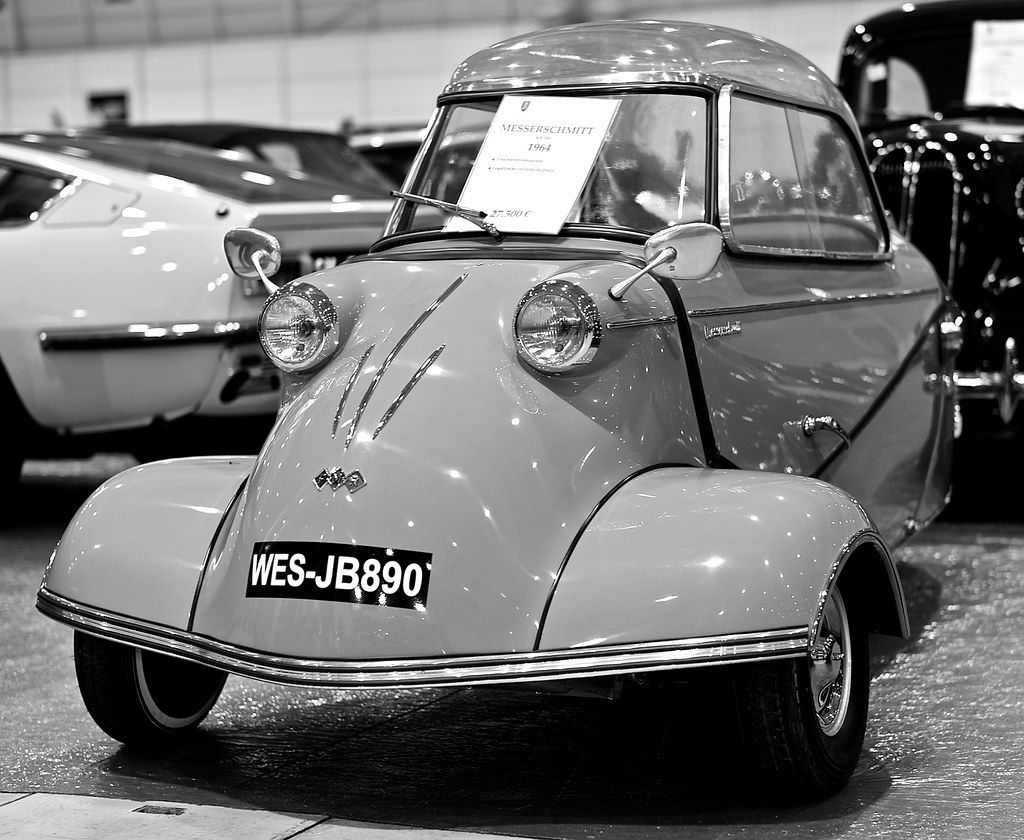
12. **Messerschmitt KR200**
From the inventive mind of a former aircraft manufacturer, the Messerschmitt KR200 rolled (or perhaps, taxied) onto the post-war European scene as a truly peculiar three-wheeled microcar. Its very lineage, steeped in aviation, immediately hints at the kind of streamlined, efficient, and utterly unique design principles that high-flying engineering demands, brilliantly transplanted onto the tarmac.
What instantly captivates the eye is its remarkably narrow body, a clear testament to minimalist construction, coupled with an unusual tandem seating arrangement. Forget conventional side-by-side seating and ample elbow room; this was essentially a compact cockpit for two, with occupants positioned one directly behind the other. Then there’s that undeniable, almost iconic, bubble canopy, which not only provides exceptional visibility but also gives the entire vehicle a distinctly futuristic look that emphatically screams “aerodynamic oddity.”
Powering this diminutive, road-bound rocket was a humble yet effective 191cc engine, small in displacement but undeniably mighty in purpose. The KR200 wasn’t about brute force or blistering speed; it was renowned for its exceptional maneuverability, allowing it to effortlessly dart through tight urban spaces with ease. Its impressive efficiency, too, was a major highlight, presenting a smart and economical solution for personal transport in its era.
Read more about: 22 Eye-Popping Car Decorations That Are Hilariously Over The Top

13. **Tatra T603**
Emerging from Czechoslovakia in the late 1950s, the Tatra T603 was a luxury sedan that utterly defied every conventional notion of automotive design for its era, especially from an Eastern Bloc manufacturer. Its instantly recognizable, distinctively aerodynamic, almost streamlined shape wasn’t just for show; it was a testament to visionary engineering foresight, pushing aesthetic boundaries in an automotive world often dominated by more traditional, boxy designs.
What truly set the T603 apart, both visually and mechanically, was its beating heart: a robust, air-cooled V8 engine, daringly and ingeniously mounted in the rear. This was a radical departure for a luxury vehicle, contributing not only to a unique weight distribution but also to a distinct and memorable driving character. Such advanced and unconventional engineering was clearly ahead of its time, showcasing Tatra’s audacious approach to automotive development.
The result of this peculiar yet brilliant blend of design and engineering was a vehicle that became an undeniable standout in automotive history. The T603 didn’t merely transport people; it embodied ideas, proving conclusively that luxury and sophistication could be uniquely packaged with truly unconventional flair. Its enduring legacy is one of elegant weirdness, remarkable innovation, and undeniable ingenuity that continues to fascinate enthusiasts.
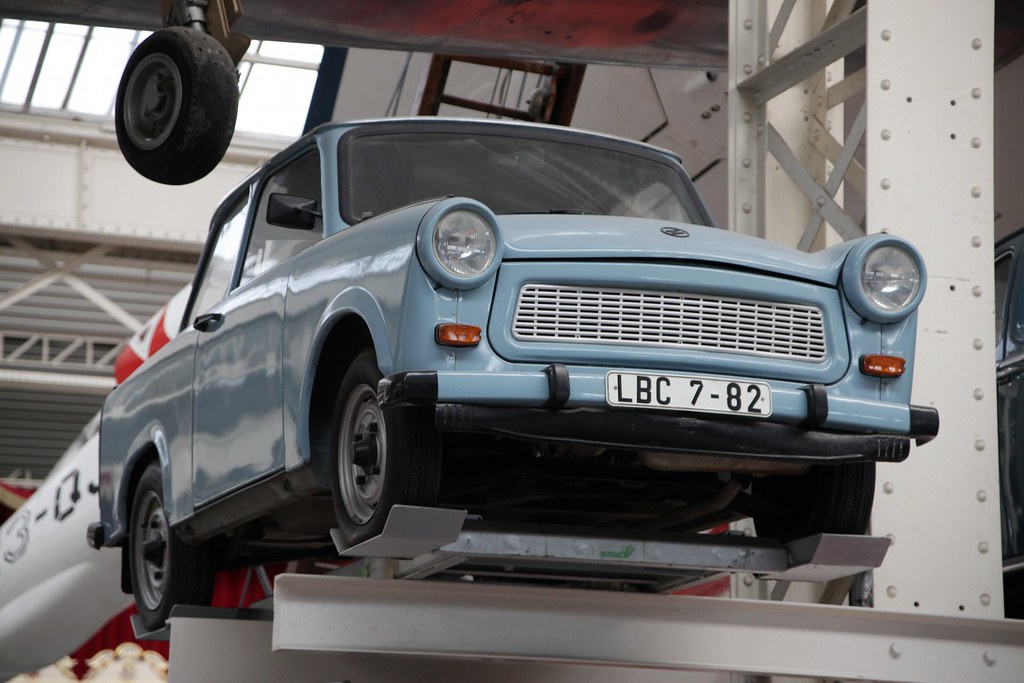
14. **Trabant 601**
Behold the Trabant 601, an East German car that is less a mere vehicle and more a rolling, tangible piece of 20th-century history. Famously, its body was ingeniously crafted from Duroplast, a unique plastic material—a resourceful solution born directly out of ingenious necessity amidst material scarcity. This unconventional construction method immediately set it apart from its steel-bodied contemporaries, giving it a distinctive and somewhat rudimentary, yet undeniably charming, character.
Its design philosophy was the very embodiment of simplicity, almost austere, reflecting an unwavering focus on basic, functional mobility rather than aesthetic flourishes or luxurious comforts. Powering this iconic automotive symbol of the Eastern Bloc was a distinctive two-stroke engine, a technology that gave the “Trabi” its unique, smoky exhaust note, a characteristic smell, and a driving experience truly unlike anything else on the road at the time.
Despite its notoriously modest performance, characterized by limited horsepower and a somewhat agricultural feel, this humble machine developed an undeniable and fervent cult following. The Trabant 601 transcended its basic function of transportation, becoming a powerful icon of historical significance and resilience. It’s a profound testament to how even the most peculiar and basic engineering can leave an indelible and cherished mark on culture and collective memory.
Read more about: Are You Driving a ‘Jerk’ Car? 14 Vehicles With Bad Driver Reputations
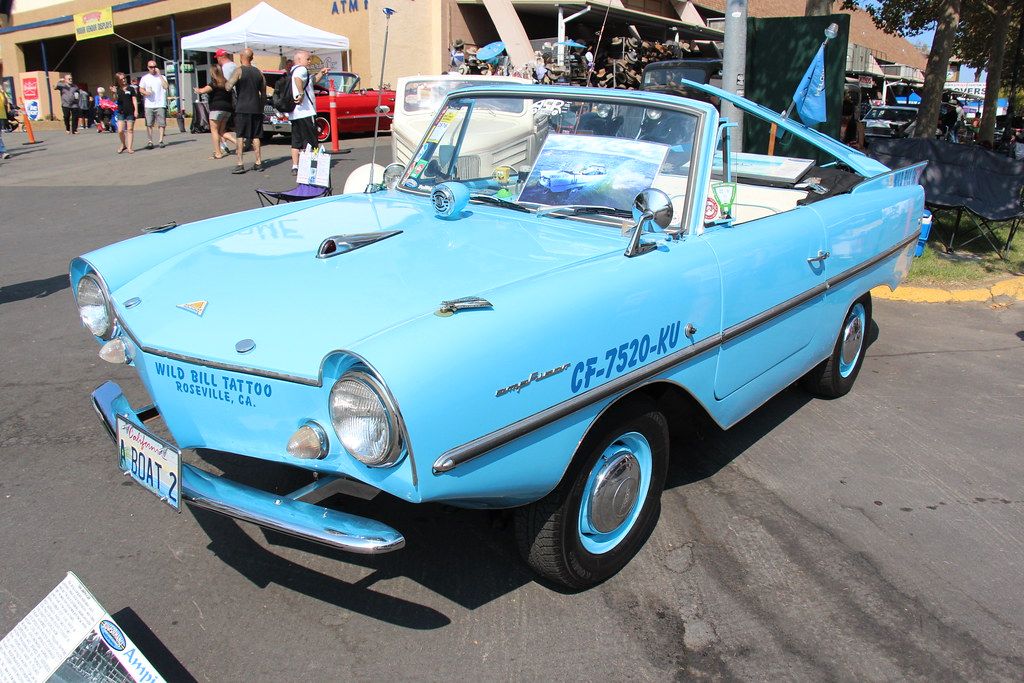
15. **Amphicar Model 770**
If you ever harbored the fantastical dream of seamlessly driving your car directly *into* a lake or river, the Amphicar Model 770 was, quite literally, your dream ride. This marvel of German engineering, meticulously produced during the 1960s, wasn’t just quirky; it was brilliantly, brazenly amphibious, meticulously designed to function effortlessly and reliably both on land and, astonishingly, in water. It was a vehicle that simply, gloriously refused to be limited to mere pavement.
This unique dual capability was, without question, its most defining and utterly fascinating feature, firmly establishing it as a singular engineering marvel in the automotive world. It wasn’t merely a car equipped with some rudimentary flotation devices; it was a fully functional boat and car combined into one audacious, peculiar package—a concept that fundamentally defied all conventional automotive norms. Imagine the sheer spectacle of pulling up to the beach and just… driving straight into the water!
While its performance was notably modest in both environments—let’s be honest, you weren’t going to win any races on the highway or conquer any high seas—that characteristic never diminished its inherent charm, its undeniable ingenuity, or its profound ability to capture the imagination. The Amphicar Model 770 remains a powerful testament to boundless human creativity, proving that sometimes the weirdest, most ambitious ideas can, against all odds, actually make it off the drawing board and onto the production line.
Car Model Information: 2024 Mitsubishi Outlander SE 2.5 2WD
Caption: Amphicar Model 770
Name: Amphicar Model 770
Manufacturer: Quandt Group
Production: 1960–1965,3,878 built
ModelYears: 1960–1968
BodyStyle: 2-door cabriolet,with boat features
Layout: RR layout
Engine: straight-4
Transmission: Manual transmission
Length: 171 in
Abbr: oncite book
Width: 62 in
Height: 60 in
Weight: convert
Wheelbase: 84 in
Last: Cardew
First: Basil
Title: Daily Express Review of the 1966 Motor Show
Year: 1966
Publisher: Beaverbrook Newspapers Ltd
Location: London
Designer: Hans Trippel
Powerout: 38 bhp
Categories: Articles with short description, CS1 maint: publisher location, Cars of Germany, Commons category link is on Wikidata, Rear-engined vehicles
Summary: The Amphicar Model 770 is an amphibious automobile which was launched at the 1961 New York Auto Show. It was made in West Germany and marketed from 1961 to 1968, with production ceasing in 1965.
Designed by Hans Trippel, the amphibious vehicle was manufactured by the Quandt Group at Lübeck and at Berlin-Borsigwalde, with a total of 3,878 manufactured in a single generation. The name Amphicar is a portmanteau of “amphibious” and “car”.
A spiritual descendant of the Volkswagen Schwimmwagen, and the Trippel SG6, the Amphicar offered only modest performance compared to most contemporary boats or cars, featured navigation lights and flag as mandated by the US Coast Guard – and after operation in water, required greasing at 13 points, one of which required removal of the rear seat.
In 2014, the publication Petrolicious described the Amphicar as “good for one thing: fun. It’s not quick or flashy, but it’s iconic, unique and friendly. What more could you ask from a vintage car? The Amphicar might not make any sense and that’s precisely why it’s so wonderful.”
Get more information about: Amphicar
Buying a high-performing used car >>>
Brand: Amphicar Model: Model 770
Price: $21,500 Mileage: 62,096 mi.
Read more about: Automotive Icons Unraveled: The Definitive Account of 15 Star Brands and Models That Fell From Grace
After traversing this remarkable landscape of automotive oddities, it’s clear that the road to innovation isn’t always straight and narrow. From vehicles designed to embrace the smallest possible footprint to those audacious enough to conquer both land and water, these 15 cars serve as a vivid reminder that true passion for design often means pushing boundaries, embracing the wonderfully unconventional, and sometimes, simply being gloriously, triumphantly weird. They are more than just mere machines; they are powerful statements, captivating tales of audacious dreams, and enduring symbols of a restless creativity that continues to shape our world, one quirky wheel at a time. Long live the weird and the wonderful in automotive history!


